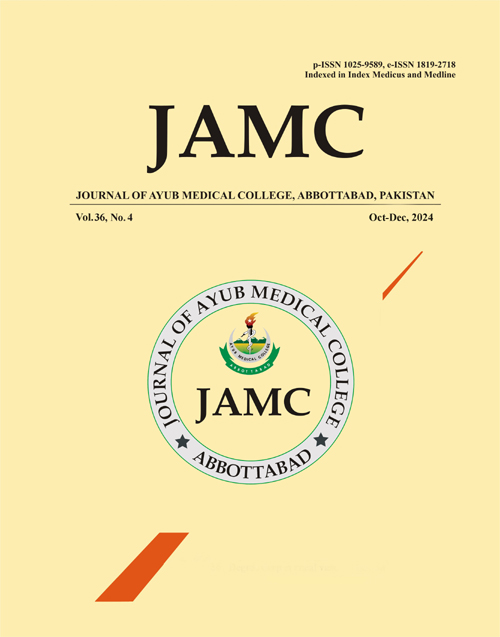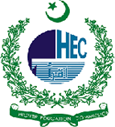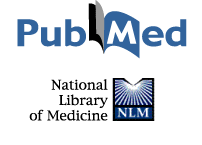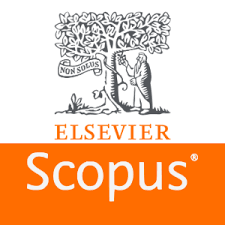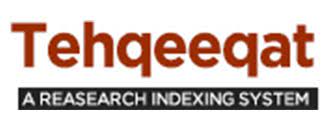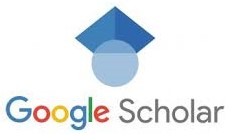PATTERN OF CHEMOTHERAPY INDUCED TOXICITIES IN CHILDREN WITH EWING SARCOMA: A CASE SERIES
DOI:
https://doi.org/10.55519/JAMC-04-13292Keywords:
Ewing sarcoma, antineoplastic combined chemotherapy protocols, chemotherapy, adverse effects, neutropeniaAbstract
Background: Ewing sarcoma is a rare and aggressive bone or soft tissue cancer that primarily affects children and adolescents. Estimated incidence of Ewing sarcoma is reported to be 1.2-2.9 in one million individuals in England and 1 in one million in the US. Objective was to determine the pattern, and influence of gender and age on chemotherapy-induced toxicities in children with Ewing sarcoma. It was a descriptive case series conducted at the Department of Pediatric Oncology, CMH Rawalpindi, from January 2014 to June 2023. Methods: Children of either gender aged less than 18 years and diagnosed cases of Ewing Sarcoma were enrolled. All patients were given VIDE (vincristine, ifosamide, doxorubicin, etoposide) chemotherapy and patients were observed for chemotherapy induced toxicities. Chi square test was used to analyze significance of age and gender on toxicity. Results: In a total of 59 children 35 (59.3%) were male and 24 (40.7%) female. Out of these 11 children expired. The mean age was 7.59±3.87 years. Younger age was strongly associated with higher occurrence of toxicity specifically children under 5 years being most affected (p<0.05). Neutropenia, nausea and vomiting, thrombocytopenia, and diarrhea were the most frequent adverse events observed in 53 (89.9%), 37 (62.7%), 36 (61.0%), and 36 (61.0%) patients respectively. There was no association of gender with chemotherapy induced toxicity. Neutropenic sepsis and diarrhea were positively associated with mortality in the 11 children who expired (p<0.05). Conclusion: Neutropenia, nausea and vomiting, mucositis, thrombocytopenia and diarrhea were the most frequent chemotherapy induced toxicities in children with Ewing sarcoma. Younger children specifically under 5 years have a higher chance of chemotherapy induced toxicities however gender did not seem to influence related toxicities. Neutropenic sepsis was the major predictor of mortality warranting higher vigilance and aggressive management of infections.
References
1. Whelan J, McTiernan A, Cooper N, Wong YK, Francis M, Vernon S, et al. Incidence and survival of malignant bone sarcomas in England 1979-2007. Int J Cancer 2012;131(4):E508–17.
2. Khan S, Abid Z, Haider G, Bukhari N, Zehra D, Hashmi M, et al. Incidence of Ewing's Sarcoma in Different Age Groups, Their Associated Features, and Its Correlation with Primary Care Interval. Cureus 2021;13(3):e13986.
3. Kaçmaz İE, Keçeci B, Basa CD, Sabah D. Treatment of pelvic Ewing's sarcoma: Pros and cons of chemotherapy plus defini-tive radiotherapy versus surgery. Acta Orthop Traumatol Turc 2020;54(1):42–8.
4. Zöllner SK, Amatruda JF, Bauer S, Collaud S, de Alava E, DuBois SG, et al. Ewing Sarcoma-Diagnosis, Treatment, Clinical Challenges and Future Perspectives. J Clin Med 2021;10(8):1685.
5. Indelicato DJ, Keole SR, Shahlaee AH, Shi W, Morris CG, Marcus RB Jr. Definitive radiotherapy for ewing tumors of extremities and pelvis: long-term disease control, limb func-tion, and treatment toxicity. Int J Radiat Oncol Biol Phys 2008;72(3):871–7.
6. Sanguanboonyaphong P, Komvilaisak P, Suwannaying K, Yoodee J, Saeteaw M, Chanthawong S, et al. Predictors of Chemotherapy Induced Adverse Events in Pediatric Osteo-sarcoma Patients. Asian Pac J Cancer Prev 2022;23(1):93–100.
7. Jameus A, Kennedy AE, Thome C. Hematological Changes Following Low Dose Radiation Therapy and Comparison to Current Standard of Care Cancer Treatments. Dose Response 2021;19(4):15593258211056196.
8. Anderton J, Moroz V, Marec-Bérard P, Gaspar N, Laurence V, Martin-Broto J, et al. International randomised controlled trial for the treatment of newly diagnosed EWING sarcoma family of tumours - EURO EWING 2012 Protocol. Trials 2020;21(1):96.
9. Ladenstein R, Pötschger U, Le Deley MC, Whelan J, Paulus-sen M, Oberlin O, et al. Primary disseminated multifocal Ewing sarcoma: results of the Euro-EWING 99 trial. J Clin Oncol 2010;28(20):3284–91.
10. Le Deley MC, Paulussen M, Lewis I, Brennan B, Ranft A, Whelan J, et al. Cyclophosphamide compared with ifosfamide in consolidation treatment of standard-risk Ewing sarcoma: results of the randomized noninferiority Euro-EWING99-R1 trial. J Clin Oncol 2014;32(23):2440–8.
11. Weber DC, Beer J, Kliebsch UL, Teske C, Baust K, Walser M, et al. Quality-of-life evaluations in children and adolescents with Ewing sarcoma treated with pencil-beam-scanning pro-ton therapy. Pediatr Blood Cancer 2022;69(12):e29956.
12. Davis L, Malempati S. Ewing sarcoma in adolescents and young adults: diagnosis and treatment. Clin Oncol Adolesc Young Adults 2014;4:21–31.
13. Umeda K, Miyamura T, Yamada K, Sano H, Hosono A, Sumi M et al. Japan Ewing Sarcoma Study Group. Clinical out-come of patients with recurrent or refractory localized Ewing's sarcoma family of tumors: A retrospective report from the Japan Ewing Sarcoma Study Group. Cancer Rep (Hoboken) 2021;4(3):e1329.
14. Werier J, Yao X, Caudrelier JM, Di Primio G, Ghert M, Gupta AA, et al. A systematic review of optimal treatment strategies for localized Ewing's sarcoma of bone after neoadjuvant-chemotherapy. Surg Oncol 2016;25(1):16–23.
15. Paioli A, Luksch R, Faioli F, Tamburini A, Cesari M, Palme-rini E, et al. Chemotherapy-related toxicity in patients with non-metastatic Ewing sarcoma: influence of sex and age. J Chemother 2014;26(1):49–56.
16. Juergens C, Weston C, Lewis I, Whelan J, Paulussen M, Ober-lin O, et al. Safety assessment of intensive induction with vincristine, ifosfamide, doxorubicin, and etoposide (VIDE) in the treatment of Ewing tumors in the EURO-E.W.I.N.G. 99 clinical trial. Pediatr Blood Cancer 2006;47(1):22–9.
17. Basu SK, Fernandez ID, Fisher SG, Asselin BL, Lyman GH. Length of stay and mortality associated with febrile neutro-penia among children with cancer. J Clin Oncol 2005;23(31):7958–66.
18. Mhaissen MN, Rodriguez A, Gu Z, Zhu H, Tang L, Sun Y, et al. Epidemiology of Diarrhoeal Illness in Pediatric Oncology Patients. J Pediatric Infect Dis Soc 2017;6(3):275–80.
19. Hartman RM, Cohen AL, Antoni S, Mwenda J, Weldegebriel G, Biey J, et al. Risk factors for mortality among children younger than age 5 years with severe diarrhoea in low- and middle-income countries: Findings from the World Health Organization-coordinated global rotavirus and pediatric diar-rhoea surveillance networks. Clin Infect Dis 2023;76(3):e1047–53.
Downloads
Published
How to Cite
Issue
Section
License
Copyright (c) 2024 Rabiha Manzoor, Shaista Naz, Sobia Ali, Rabia Tariq, Ifnan Shamraiz, Abdul Wahab Siddique

This work is licensed under a Creative Commons Attribution-NoDerivatives 4.0 International License.
Journal of Ayub Medical College, Abbottabad is an OPEN ACCESS JOURNAL which means that all content is FREELY available without charge to all users whether registered with the journal or not. The work published by J Ayub Med Coll Abbottabad is licensed and distributed under the creative commons License CC BY ND Attribution-NoDerivs. Material printed in this journal is OPEN to access, and are FREE for use in academic and research work with proper citation. J Ayub Med Coll Abbottabad accepts only original material for publication with the understanding that except for abstracts, no part of the data has been published or will be submitted for publication elsewhere before appearing in J Ayub Med Coll Abbottabad. The Editorial Board of J Ayub Med Coll Abbottabad makes every effort to ensure the accuracy and authenticity of material printed in J Ayub Med Coll Abbottabad. However, conclusions and statements expressed are views of the authors and do not reflect the opinion/policy of J Ayub Med Coll Abbottabad or the Editorial Board.
USERS are allowed to read, download, copy, distribute, print, search, or link to the full texts of the articles, or use them for any other lawful purpose, without asking prior permission from the publisher or the author. This is in accordance with the BOAI definition of open access.
AUTHORS retain the rights of free downloading/unlimited e-print of full text and sharing/disseminating the article without any restriction, by any means including twitter, scholarly collaboration networks such as ResearchGate, Academia.eu, and social media sites such as Twitter, LinkedIn, Google Scholar and any other professional or academic networking site.

